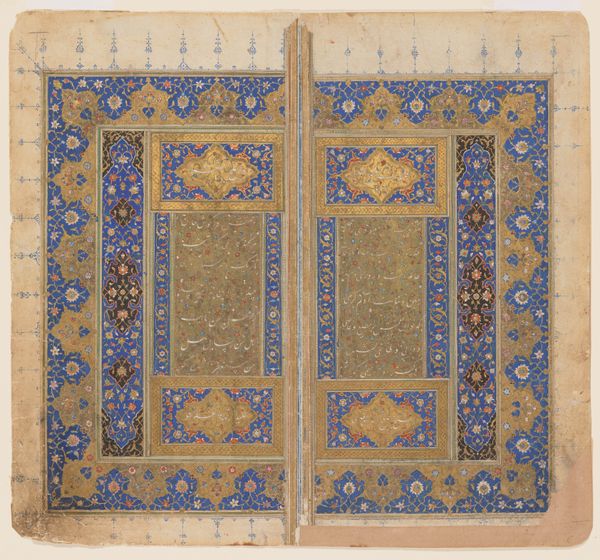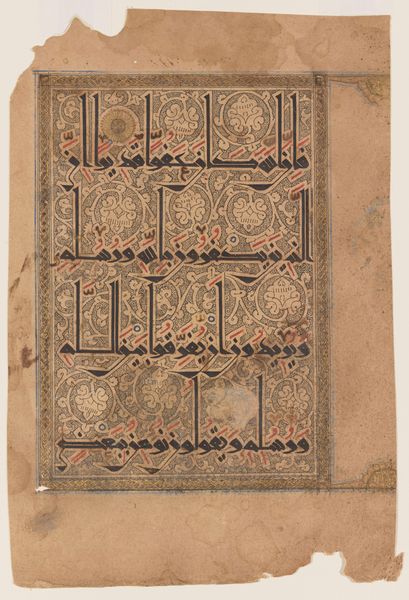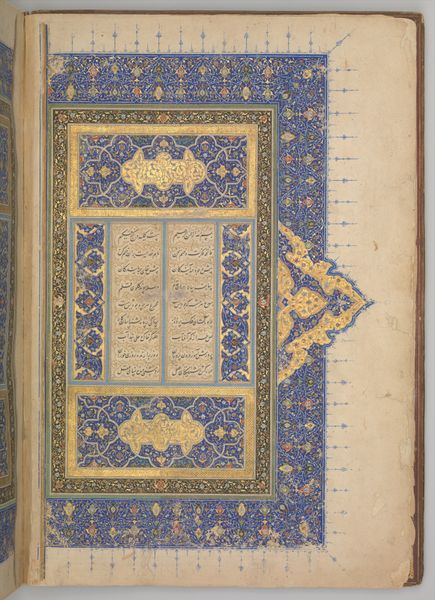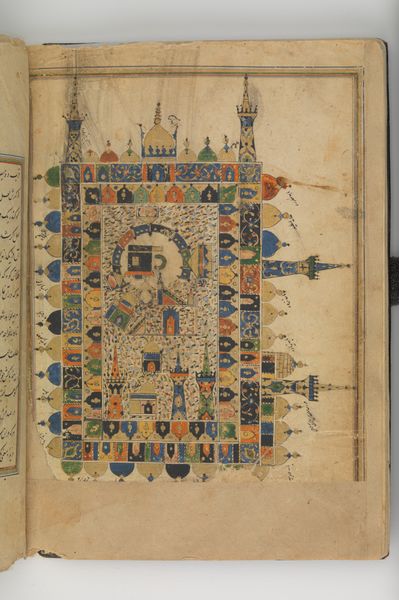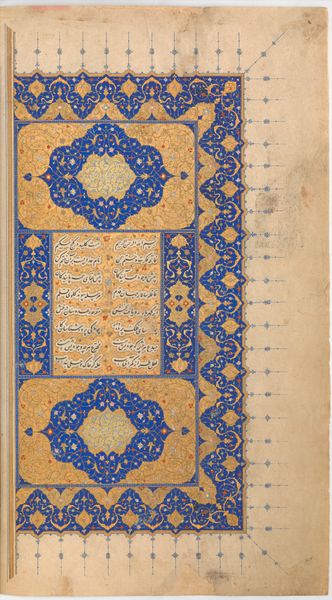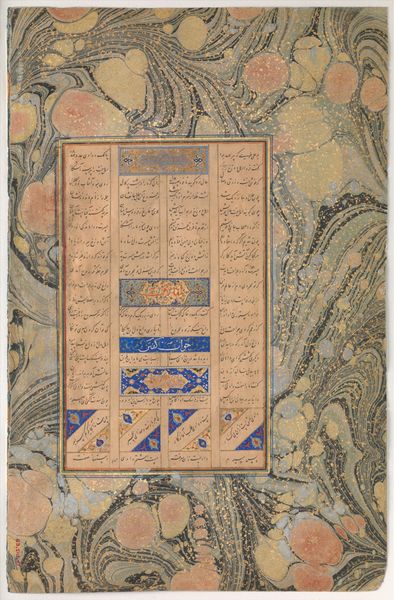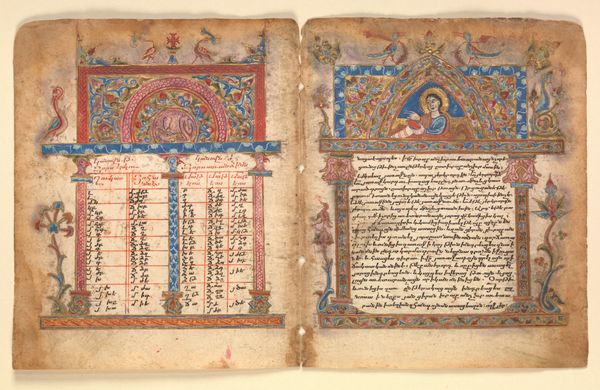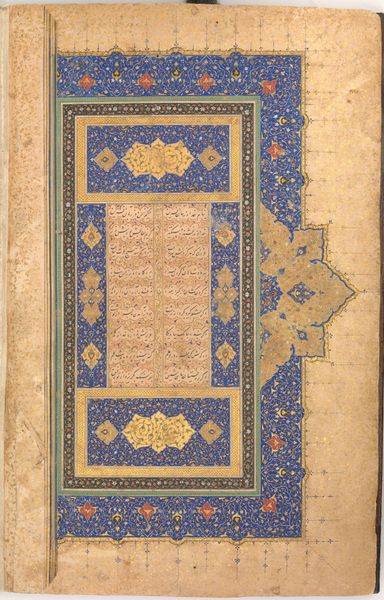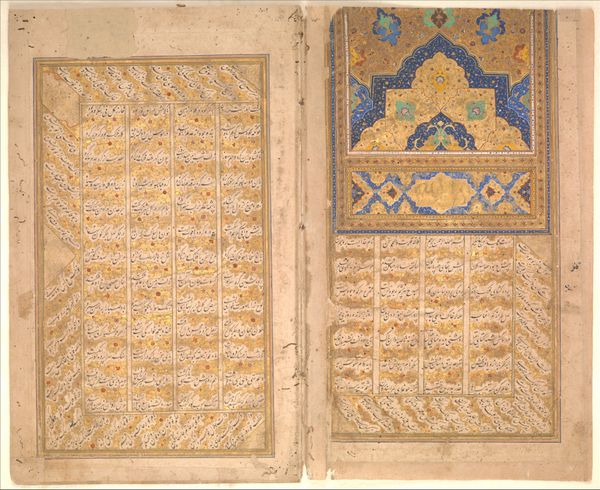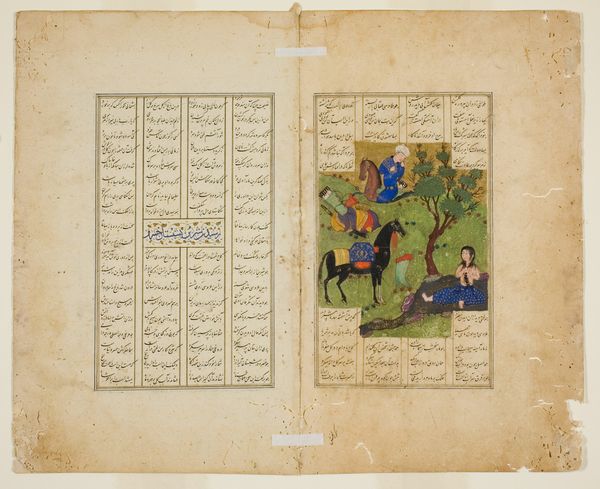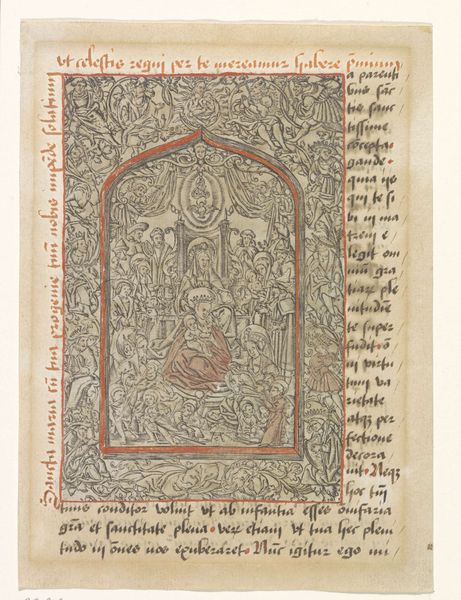
gold, paper, ink-on-paper, watercolor, ink
#
water colours
#
gold
#
paper
#
ink-on-paper
#
watercolor
#
ink
#
islamic-art
#
miniature
#
watercolor
#
calligraphy
Dimensions: 9 3/16 x 11 7/16 in. (23.34 x 29.05 cm) (sheet)
Copyright: Public Domain
Curator: Oh, look at this beauty. It’s a title page from a manuscript, simply called “Untitled,” created around 1528 by an anonymous artist. It’s ink, watercolor, and gold on paper and currently resides here at the Minneapolis Institute of Art. Editor: It’s so intricate. I am struck by the geometric design overlaid with that fluid calligraphy. There's a dance happening on the page, a careful, almost mathematical precision met by something much more lyrical and free. I wonder about the narrative implications here? Curator: Well, that’s the magic of Islamic manuscript art, isn’t it? The balance of the spiritual and the decorative, of language as both information and ornamentation. These illuminated pages weren't just functional; they elevated the text they prefaced, imbuing it with a sense of sacredness. This particular example gives us a glimpse into the artistry of the early 16th century, reflecting a sophisticated aesthetic sensibility that was highly valued across various Islamic courts and libraries. Think of the patron that might have prized such craftsmanship. Editor: You're right, I'm letting my Western gaze lead. We tend to divorce beauty and utility, as if something beautiful can't also serve a deeply practical function. It prompts one to reflect how the function of calligraphy is not necessarily to deliver clear cut directives. Rather it offers an invitation for meditative focus through detailed patterning and subtle symbolic inclusions. Is there reason to believe this artistry speaks to wider socio-political issues in 16th century artistic commissions and expressions? Curator: In a way, absolutely. Manuscripts were a form of cultural capital. Owning, commissioning, and displaying them projected power, prestige, and piety. A page like this, so meticulously crafted, served as a visual statement. As for the calligraphy, its form itself carries cultural weight. Different styles were associated with specific regions, dynasties, or even individual calligraphers. Its position on a title page indicated reverence of the words to come. Editor: It’s truly like holding a little universe in your hands. Considering the era, you have to remember how revolutionary accessible literature was. That alone positions artistic displays of religious texts as an important point of civic interest and gathering. How often was it publicly displayed versus held privately, do you think? Curator: It's hard to say with certainty for this specific manuscript, but many would have been part of royal libraries, occasionally displayed in a carefully curated setting for visiting dignitaries, learned scholars or even for select members of the court. They were objects of reverence but also instruments of diplomacy, demonstrating cultural and artistic power to the external world. Editor: I see how it fits into its historical context. Something whispers through this artwork to the core, some vibration or deep song. It reminds me that everything carries stories inside of stories, ready to unravel as the moment allows. Curator: Indeed. And sometimes, all we need is a single, illuminated page to ignite the imagination.
Comments
No comments
Be the first to comment and join the conversation on the ultimate creative platform.
